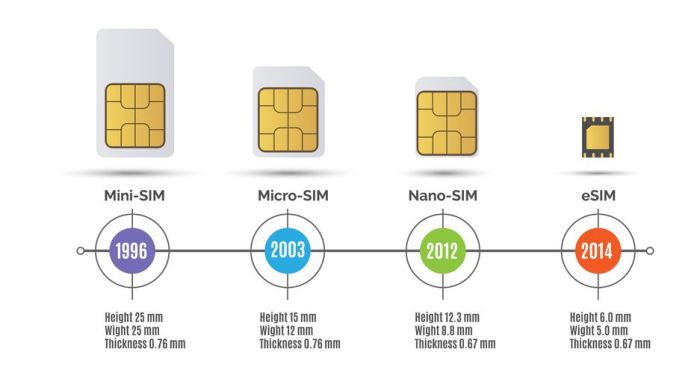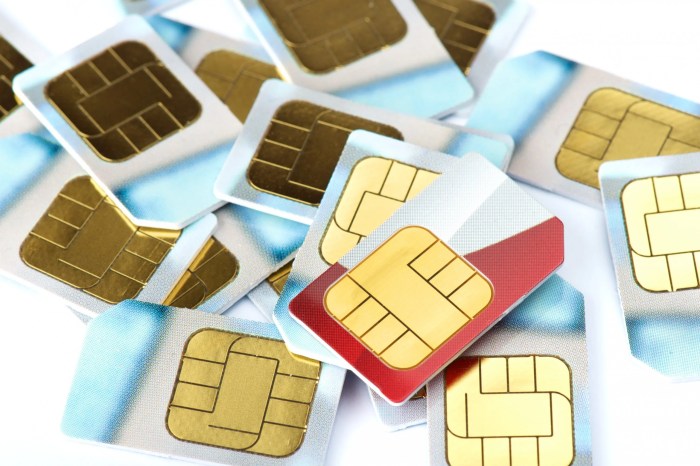IoT security for consumer devices has become a paramount concern as our homes and lives become increasingly intertwined with the internet. The convenience and functionality offered by smart devices, from voice assistants to connected appliances, come at a price – a growing vulnerability to cyberattacks.
While these devices promise a more connected and efficient lifestyle, they also present a new frontier for hackers, who exploit vulnerabilities to steal data, disrupt services, and even control our homes remotely. This intricate dance between convenience and security demands a deeper understanding of the threats posed by the Internet of Things (IoT) and the measures needed to protect our connected lives.
The rise of IoT in consumer devices has brought about a wave of innovation, enabling us to control our homes, manage our health, and even automate our daily routines. From smart thermostats and security cameras to connected refrigerators and fitness trackers, these devices have become an integral part of our lives.
However, this interconnectedness comes with a dark side. Hackers can exploit vulnerabilities in these devices to gain access to our personal information, disrupt our homes, and even control our devices remotely. This vulnerability is particularly alarming as IoT devices often lack robust security features and are frequently connected to home networks, providing hackers with an entry point to our digital lives.
The Rise of IoT in Consumer Devices
The Internet of Things (IoT) has revolutionized the way we live, work, and interact with our surroundings. This transformative technology seamlessly connects everyday objects to the internet, enabling them to communicate and share data. The rapid adoption of IoT devices in homes has brought numerous benefits, enhancing convenience, efficiency, and security.
However, this interconnectedness also introduces new security challenges, requiring consumers to be aware of potential risks and vulnerabilities.
Benefits and Challenges for Consumers
The increasing integration of IoT devices in homes has brought a wave of convenience and efficiency. Consumers can now remotely control appliances, monitor their homes, and receive personalized recommendations, making everyday tasks simpler and more efficient. For instance, smart thermostats can automatically adjust room temperatures based on occupancy and weather conditions, saving energy and reducing costs.
Smart lighting systems can be programmed to illuminate homes based on schedules or movement, providing enhanced safety and convenience. However, the reliance on connected devices also presents unique challenges for consumers.
- Privacy Concerns: The constant collection and transmission of data from IoT devices raise privacy concerns. Consumers may be unaware of the extent to which their personal information is being collected and used. This data can be vulnerable to unauthorized access or misuse, potentially leading to identity theft or other security breaches.
- Security Vulnerabilities: IoT devices often lack robust security features, making them susceptible to hacking and malware attacks. Attackers can exploit vulnerabilities to gain control of devices, steal data, or launch denial-of-service attacks. This can disrupt the functionality of devices and compromise the security of entire networks.
- Interoperability Issues: The lack of standardization in the IoT ecosystem can lead to interoperability issues. Devices from different manufacturers may not be compatible, limiting the functionality and flexibility of smart home systems. This can create challenges for consumers when integrating new devices or upgrading existing systems.
Examples of Popular IoT Devices
The growing popularity of IoT devices has led to a wide range of products catering to various needs and preferences.
- Smart Speakers: Devices like Amazon Echo and Google Home provide voice-activated control over various smart home functions, including music playback, information retrieval, and device automation. These speakers are often integrated with other IoT devices, creating a centralized hub for controlling and managing the smart home ecosystem.
- Smart Security Systems: These systems include door and window sensors, motion detectors, and security cameras, providing real-time monitoring and alerts for potential threats. Consumers can remotely access and control these systems, enhancing home security and peace of mind.
- Smart Appliances: Refrigerators, washing machines, and ovens are now available with smart features. These appliances can be controlled remotely, monitored for performance, and even provide personalized recommendations based on usage patterns. This integration of technology enhances convenience and efficiency in the kitchen and laundry room.
Potential Risks and Vulnerabilities
The increasing reliance on connected devices creates a complex ecosystem with numerous potential risks and vulnerabilities.
- Data Breaches: Hackers can exploit vulnerabilities in IoT devices to gain access to sensitive data, including personal information, financial details, and home security footage. This data can be used for malicious purposes, such as identity theft or extortion.
- Denial-of-Service Attacks: Attackers can target IoT devices to disrupt their functionality and prevent them from performing their intended tasks. This can lead to inconvenience and frustration for consumers, particularly in cases where essential devices like security systems or medical equipment are affected.
- Botnet Formation: IoT devices can be compromised and used as part of botnets, large networks of infected devices that can be controlled remotely. These botnets can be used to launch large-scale attacks, such as distributed denial-of-service attacks, or to spread malware.
Common Security Threats in IoT Devices
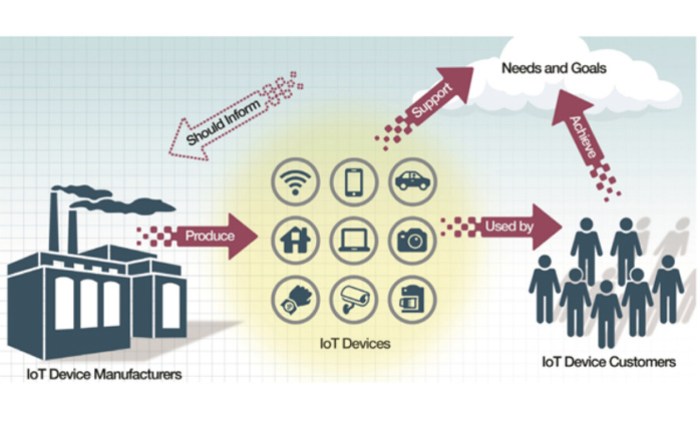
The interconnected nature of the Internet of Things (IoT) presents a vast attack surface, making consumer IoT devices particularly vulnerable to various security threats. Attackers exploit weaknesses in these devices to gain unauthorized access, steal sensitive information, disrupt functionality, or even cause physical harm.
Understanding these threats is crucial for mitigating risks and ensuring the security of IoT ecosystems.
Common Attack Vectors
Attackers employ various methods to compromise IoT devices, targeting specific vulnerabilities to achieve their malicious goals. These methods can be broadly categorized into several common attack vectors:
- Default Credentials and Weak Passwords:Many IoT devices ship with default usernames and passwords that are easily accessible online. Attackers can exploit these pre-configured credentials to gain unauthorized access to devices, potentially compromising entire networks.
- Insecure Communication Channels:IoT devices often communicate over insecure protocols, such as unencrypted HTTP or Telnet, making data transmissions vulnerable to eavesdropping and manipulation. Attackers can intercept and decrypt sensitive information exchanged between devices and servers, compromising user privacy and security.
- Software Vulnerabilities:Like any software, IoT devices are susceptible to vulnerabilities that attackers can exploit to gain control. These vulnerabilities can arise from poor coding practices, outdated software, or missing security patches, allowing attackers to execute malicious code or gain unauthorized access.
- Lack of Encryption and Authentication:The absence of proper encryption and authentication mechanisms can leave IoT devices vulnerable to data breaches and unauthorized access. Attackers can easily intercept and modify data transmitted over insecure channels, compromising data integrity and confidentiality.
- Denial-of-Service (DoS) Attacks:These attacks aim to overload the device’s resources, rendering it unresponsive or inaccessible. Attackers can achieve this by sending a flood of malicious traffic or exploiting vulnerabilities in the device’s firmware, disrupting normal operations and causing inconvenience to users.
- Man-in-the-Middle (MitM) Attacks:Attackers intercept communication between devices and servers, posing as legitimate entities to gain access to sensitive information. They can eavesdrop on data transmissions, modify data packets, or even redirect traffic to malicious servers, compromising user privacy and security.
Examples of Real-World Attacks
Numerous real-world examples demonstrate the consequences of IoT security vulnerabilities.
- Mirai Botnet:This infamous botnet, composed of millions of compromised IoT devices, launched massive distributed denial-of-service (DDoS) attacks, crippling websites and online services, highlighting the vulnerability of poorly secured IoT devices.
- Kaspersky’s “Operation ShadowHammer”uncovered a sophisticated cyberespionage campaign that targeted over 500,000 computers worldwide, including those using ASUS and Gigabyte motherboards. The attackers injected malicious firmware into the motherboards during the manufacturing process, gaining persistent access to compromised systems.
- Hacking of Smart Home Devices:Researchers have demonstrated the ability to remotely control smart home devices, such as smart locks, cameras, and thermostats, by exploiting vulnerabilities in their software and communication protocols. These attacks highlight the potential for attackers to gain unauthorized access to sensitive information and control physical devices.
Consequences of IoT Security Breaches
Security breaches in IoT devices can have far-reaching consequences, impacting individuals, organizations, and even critical infrastructure.
Do not overlook the opportunity to discover more about the subject of The best 8 free Forensics courses on the web.
- Data Breaches and Privacy Violations:Compromised IoT devices can expose sensitive personal information, such as financial data, medical records, and location history, to unauthorized access, leading to identity theft, financial fraud, and privacy violations.
- Disruption of Services and Operations:IoT security breaches can disrupt critical services and operations, impacting businesses, healthcare systems, and transportation networks. Attackers can disable devices, manipulate data, or even cause physical damage, leading to financial losses, operational downtime, and reputational damage.
- Safety and Security Risks:Vulnerable IoT devices can pose significant safety and security risks. Attackers can exploit vulnerabilities to control physical devices, such as smart cars, medical devices, and industrial equipment, potentially leading to accidents, injuries, and even fatalities.
Security Measures for Consumer IoT Devices
Securing consumer IoT devices is crucial due to the increasing number of connected devices and the growing threat landscape. Various security measures are implemented to protect these devices and their sensitive data. This section will explore common security measures, their effectiveness, and recommendations for consumers to enhance their IoT device security.
Common Security Measures
Security measures play a vital role in safeguarding consumer IoT devices. These measures aim to protect devices from unauthorized access, data breaches, and malicious attacks. Here are some common security measures implemented in IoT devices:
| Security Measure | Description | Effectiveness | Limitations |
|---|---|---|---|
| Encryption | Transforms data into an unreadable format, making it difficult for unauthorized parties to access. | Highly effective in protecting data during transmission and storage. | Requires strong encryption algorithms and secure key management. Vulnerable to attacks if keys are compromised. |
| Authentication | Verifies the identity of users and devices before granting access. | Essential for preventing unauthorized access and protecting sensitive data. | Can be bypassed if authentication mechanisms are weak or compromised. |
| Access Control | Limits access to specific users or devices based on predefined permissions. | Helps prevent unauthorized access and data modification. | Requires careful configuration and monitoring to ensure proper access control. |
| Software Updates | Provides patches and fixes for vulnerabilities and security flaws. | Crucial for maintaining device security and mitigating potential risks. | Requires timely updates and user awareness to ensure devices are protected. |
Effectiveness of Security Measures
The effectiveness of security measures depends on various factors, including the implementation, configuration, and the sophistication of potential threats. For instance, encryption can be highly effective if implemented correctly with strong algorithms and secure key management. However, it can be vulnerable to attacks if keys are compromised or encryption algorithms are weak.
Similarly, authentication can prevent unauthorized access, but it can be bypassed if authentication mechanisms are weak or compromised.
Recommendations for Consumers
Consumers can take several steps to enhance the security of their IoT devices:
- Choose reputable brands:Opt for devices from manufacturers known for their security practices and commitment to updates.
- Read reviews and research security features:Before purchasing an IoT device, research its security features and read reviews from other users.
- Use strong passwords and unique usernames:Create strong, unique passwords for each device and avoid using the same password for multiple accounts.
- Enable two-factor authentication:This adds an extra layer of security by requiring an additional code, typically sent to your phone, to log in.
- Keep software up to date:Regularly update device firmware and applications to patch vulnerabilities and security flaws.
- Be cautious about connecting to public Wi-Fi networks:Public Wi-Fi networks can be less secure, so avoid connecting sensitive devices to them.
- Monitor device activity:Regularly review device activity and look for any unusual patterns or suspicious behavior.
The Role of Manufacturers in IoT Security
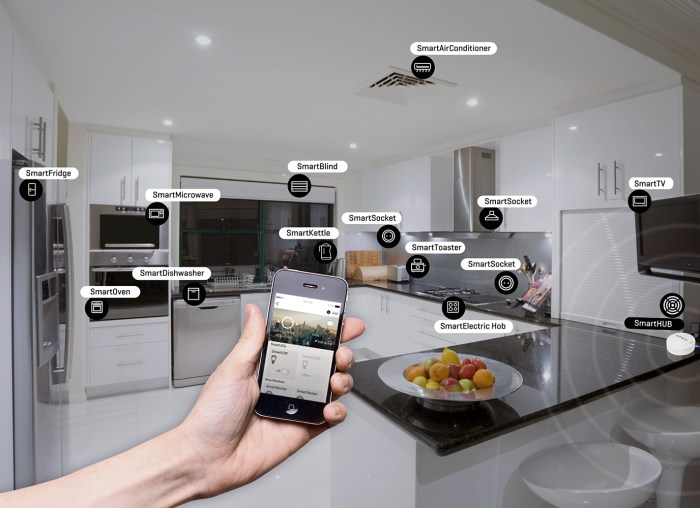
The responsibility for securing IoT devices ultimately rests with the manufacturers. They are the ones who design, develop, and deploy these devices, and they have the power to build security into the very core of their products. This responsibility extends beyond simply protecting consumer data; it also encompasses safeguarding the physical safety of individuals and ensuring the reliability of the devices themselves.
The Impact of Poor Security Practices
When manufacturers prioritize features and functionality over security, the consequences can be dire. Poor security practices can lead to vulnerabilities that expose consumers to various threats, including data breaches, device hijacking, and even physical harm. This, in turn, erodes consumer trust in IoT devices and the companies that produce them.
For example, in 2016, a massive DDoS attack was launched using a botnet of compromised IoT devices, highlighting the real-world dangers of neglecting security.
Best Practices for Secure IoT Development, IoT security for consumer devices
Manufacturers can mitigate these risks by implementing robust security practices throughout the entire device lifecycle. This includes:
Secure Design and Development
- Use secure coding practices:This involves adhering to coding standards and using secure libraries and frameworks to minimize vulnerabilities.
- Implement secure boot and firmware updates:This helps to ensure that the device’s software is not tampered with and can be updated to patch vulnerabilities.
- Employ secure communication protocols:Secure protocols such as TLS/SSL should be used to protect data transmitted between devices and servers.
- Minimize attack surface:Devices should only expose the necessary ports and services to the internet, reducing the potential for exploitation.
Continuous Security Monitoring and Testing
- Conduct regular security audits:This involves identifying and mitigating potential vulnerabilities in the device’s hardware and software.
- Implement intrusion detection and prevention systems:These systems can detect and block malicious activity attempting to access or compromise the device.
- Monitor for suspicious activity:Manufacturers should establish systems to monitor device behavior and identify anomalies that may indicate a security breach.
Transparency and Communication
- Disclose security practices:Manufacturers should be transparent about their security practices and vulnerabilities in their devices.
- Provide timely security updates:Manufacturers should release security patches promptly to address vulnerabilities discovered in their devices.
- Communicate effectively with consumers:Manufacturers should communicate clearly and concisely with consumers about security issues and how to protect their devices.
Future Trends in IoT Security
The landscape of IoT security is constantly evolving, driven by the emergence of new technologies, evolving threat vectors, and the increasing interconnectedness of devices. As the IoT ecosystem expands, so too do the challenges of securing these devices and the data they collect.
The Impact of Artificial Intelligence and Machine Learning
Artificial intelligence (AI) and machine learning (ML) are poised to play a significant role in enhancing IoT security. These technologies offer several advantages:
- Improved Threat Detection:AI and ML algorithms can analyze vast amounts of data from IoT devices, identifying patterns and anomalies that might indicate malicious activity. This enables faster and more accurate detection of threats, even those that are previously unknown.
- Proactive Security Measures:AI and ML can be used to develop proactive security measures. For instance, AI-powered systems can learn from past attacks and vulnerabilities, predicting potential threats and implementing preventative measures before they can exploit weaknesses in IoT devices.
- Automated Security Operations:AI and ML can automate security tasks, such as vulnerability scanning, patch management, and incident response. This frees up security professionals to focus on more strategic tasks, enhancing the overall security posture of IoT ecosystems.
Examples of AI and ML in action include:
- Anomaly Detection:AI algorithms can monitor network traffic and identify unusual patterns that might indicate a denial-of-service attack or other malicious activity. This allows security teams to respond quickly to threats and prevent damage to IoT devices.
- Vulnerability Assessment:AI-powered tools can analyze the code of IoT devices, identifying potential vulnerabilities that could be exploited by attackers. This enables developers to fix vulnerabilities before they are exploited, improving the security of IoT devices.
AI and ML are transforming the way we approach IoT security, moving from reactive to proactive defenses.
Final Summary
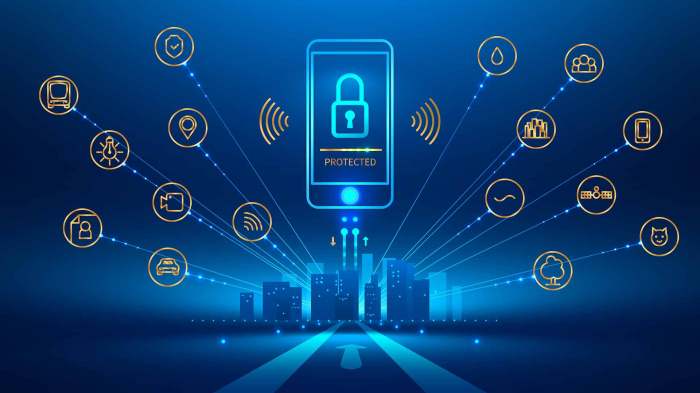
As the IoT ecosystem expands, the need for robust security measures becomes increasingly critical. Consumers must be aware of the risks and take proactive steps to protect their devices. Manufacturers have a crucial role to play in designing secure devices and providing regular security updates.
The future of IoT security lies in collaboration between consumers, manufacturers, and security experts to build a more resilient and secure connected world. This journey requires a collective effort to address the challenges and leverage the opportunities presented by the interconnected world we are building.
Clarifying Questions: IoT Security For Consumer Devices
What are some examples of popular IoT devices?
Smart speakers, smart thermostats, security cameras, smart lighting, connected appliances, fitness trackers, and smart home hubs are just a few examples of popular IoT devices used by consumers.
How can I secure my IoT devices?
Use strong passwords, enable two-factor authentication, keep software up to date, and consider using a dedicated network for your IoT devices.
What is the role of manufacturers in securing IoT devices?
Manufacturers are responsible for designing secure devices, implementing robust security features, and providing regular security updates to address vulnerabilities.
What are some emerging technologies shaping the future of IoT security?
Artificial intelligence (AI) and machine learning (ML) are playing a significant role in detecting and mitigating security threats in the IoT ecosystem.


